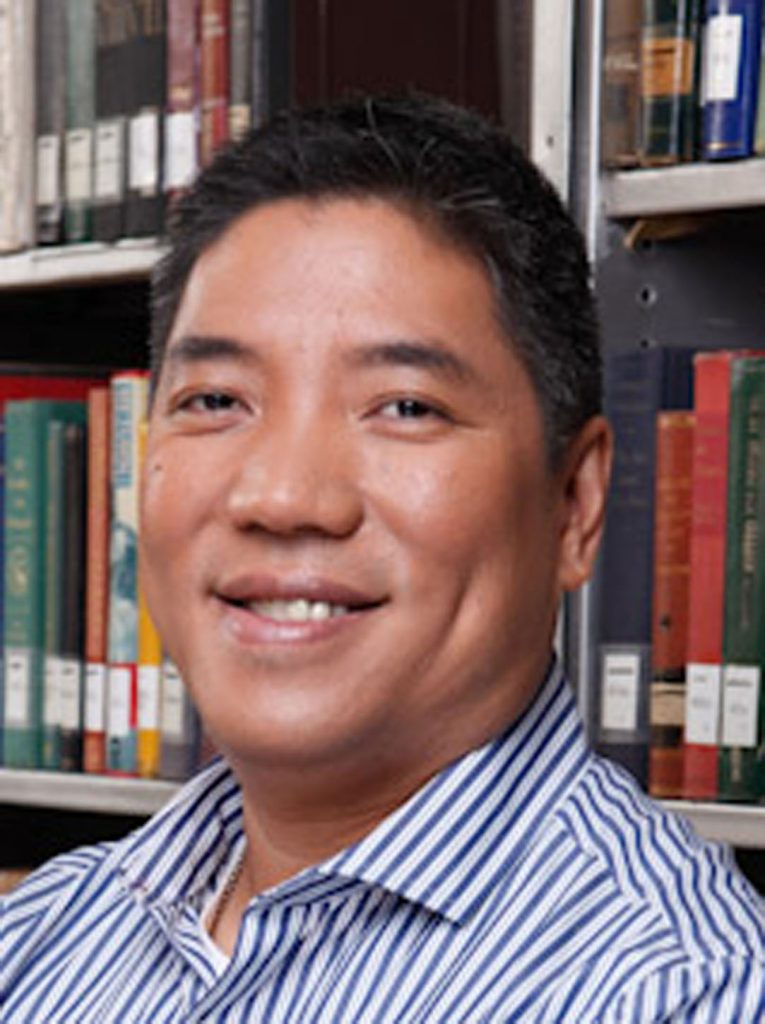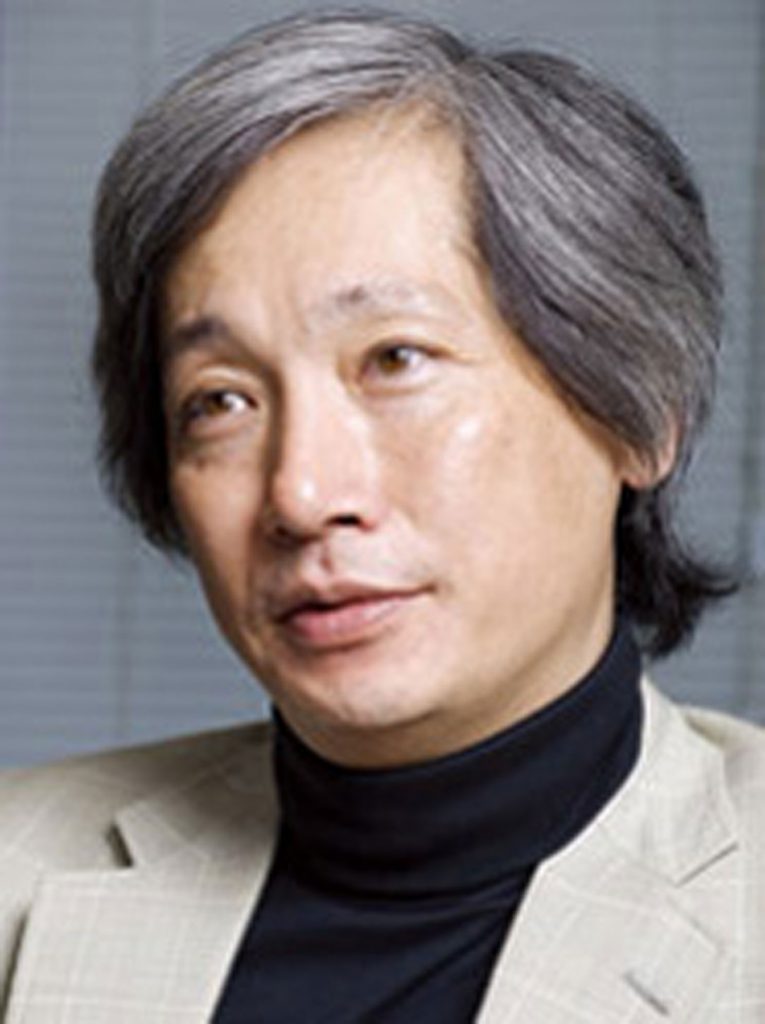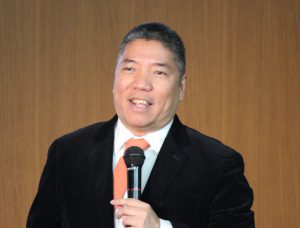This event now concluded. Report available here.
- Lecturer: Ambeth R. Ocampo (Associate Professor, Ateneo de Manila University, Philippines)
- Moderator: Fujiwara Kiichi (Professor, University of Tokyo)
- Date: Tuesday, October 17, 2017, 7:00-8:30 pm (Doors open at 6:30 pm)
- Venue: Lecture Hall, International House of Japan
- Language: English (without Japanese interpretation)
- Admission: 1,000 yen (Students: 500 yen, IHJ members: Free)
- Seating: 100 (reservations required)
 A leading public historian in the Philippines whose research covers the late 19th-century Philippines: its art, culture and the people who figure in the birth of the nation. He served as Chairman of the National Commission for Culture and the Arts (2005-07) and concurrently as Chairman, National Historical Commission of the Philippines (2002-11). He has published over twenty books and has received various honors and awards, the latest being the 2016 Fukuoka [Academic] Prize. Dr. Ocampo writes a widely-read editorial page column for the Philippines Daily Inquirer and moderates a growing Facebook fan page. He is a fellow of the Asia Leadership Fellow Program (ALFP) 2014, co-organized by the International House of Japan and the Japan Foundation. (ALFP website: http://alfpnetwork.net/en/)
A leading public historian in the Philippines whose research covers the late 19th-century Philippines: its art, culture and the people who figure in the birth of the nation. He served as Chairman of the National Commission for Culture and the Arts (2005-07) and concurrently as Chairman, National Historical Commission of the Philippines (2002-11). He has published over twenty books and has received various honors and awards, the latest being the 2016 Fukuoka [Academic] Prize. Dr. Ocampo writes a widely-read editorial page column for the Philippines Daily Inquirer and moderates a growing Facebook fan page. He is a fellow of the Asia Leadership Fellow Program (ALFP) 2014, co-organized by the International House of Japan and the Japan Foundation. (ALFP website: http://alfpnetwork.net/en/)
 Specializing in Southeast Asian studies and international politics, Prof. Fujiwara has taught at the University of the Philippines, Johns Hopkins University and the University of Bristol, and was selected as a fellow of the Woodrow Wilson International Center in Washington, D.C., before joining the University of Tokyo. He is the author of various books on international affairs, including Heiwa no riarizumu [Peace for Realists] (Iwanami Shoten, 2004) which received the Ishibashi Tanzan Award in 2005, and co-editor of The Philippines and Japan in America’s Shadow (NUS Press, 2011), which was published both in Japanese and English.
Specializing in Southeast Asian studies and international politics, Prof. Fujiwara has taught at the University of the Philippines, Johns Hopkins University and the University of Bristol, and was selected as a fellow of the Woodrow Wilson International Center in Washington, D.C., before joining the University of Tokyo. He is the author of various books on international affairs, including Heiwa no riarizumu [Peace for Realists] (Iwanami Shoten, 2004) which received the Ishibashi Tanzan Award in 2005, and co-editor of The Philippines and Japan in America’s Shadow (NUS Press, 2011), which was published both in Japanese and English.
Report
A leading public historian in the Philippines and recipient of the 2016 Fukuoka Academic Prize, Ambeth R. Ocampo compared historical representations in Japan and the Philippines in an exploration of what the people in the two countries remember, what they forget, and what lies behind those different perceptions.
Dr. Ocampo began the lecture by discussing how Filipinos remember and forget the Japanese military occupation, using “Philippines-Japan Friendship Day” as a manifestation of that recollection. While “Filipino-American Friendship Day” prompts protests outside the US Embassy in Manila, Philippines-Japan Friendship Day is strikingly peaceful in comparison. The date of the Friendship Day is another reflection of Filipino consciousness: hardly anyone in the Philippines, Dr. Ocampo explained, knows that the original date of the celebration was February 3—the date on which Takayama Ukon, the Japanese kirishitan (Roman Catholic) feudal lord, lost his life as a martyr in Manila. Nor do many people know that the date was later switched to July 23 because, by an odd coincidence, February 3 also happens to be the date on which the Japanese military massacred a massive number of civilians in Manila. Incidentally, the new date of July 23 coincided with the date on which the two countries officially signed a Peace Treaty and Reparations Agreement.

According to Dr. Ocampo, history is the product of multiple layers of memory; people from different generations and different perspectives remember a single event in myriad ways. The controversial statue of a kamikaze pilot in Mabalacat, where the so-called Japanese Special Attack Units originated, elicits divergent responses: some see the monument as little more than a testament to history, but local residents with memories of the war see the statue through much different lenses. Dr. Ocampo’s own visit to the Nagasaki Atomic Bomb Museum produced a complicated reaction, too: while the exhibits were jarring reminders of the bomb’s terrors, underscoring the need to prevent similar disasters from ever happening again, he also noticed an almost complete absence of displays concerning the Japanese military’s actions in Southeast Asia. “Even places like museums,” he said, “remember some things and forget others.”
Memories of the past have a powerful pull, one that can hold people back. Some, however, manage to free themselves from the past and forge paths forward: former Filipino President Elpidio Rivero Quirino, Dr. Ocampo explained, was one. Despite the fact that his wife and several of his children were killed at the hands of the Japanese military, Quirino chose to pardon over 100 Japanese war criminals—including several on death row—and send them home to Japan in 1953. “I am doing this,” he said, “because I do not want my children and my people to inherit from me the hate for people who might yet be our friends for the permanent interest of our country.” To Dr. Ocampo, Quirino’s story is a revealing glimpse at how we need to keep moving forward—not by simply forgetting the past, but rather by retaining portions of the past in our memories. Highlighting another dimension of Japan-Philippines relations, Ocampo also related the story of Japanese painter Kano Kanrai, who sent over 60 petitions to Quirino.
To close out the lecture, Dr. Ocampo urged his audience to look at Japan-Philippines relations from a broader perspective. “Most research on the history of the connections between Japan and the Philippines tends to focus on wartime and postwar issues,” he explained, “but the war is just one little component of the relationship between our countries. We have to recognize that—and start looking at our longer shared history.” The story of Luzon jars, which made their way to Japan via Luzon in the seventeenth century and later became prized tea urns, is one example of a historical link that lies outside the conventional boundaries of the wartime experience. Dr. Ocampo also cited the “26 martyrs of Japan,” who came to Japan through the Philippines in the sixteenth century and sacrificed their lives for their faith under Japan’s persecution of kirishitan, as another Japan-Philippines connection dating back to before the eighteenth century.